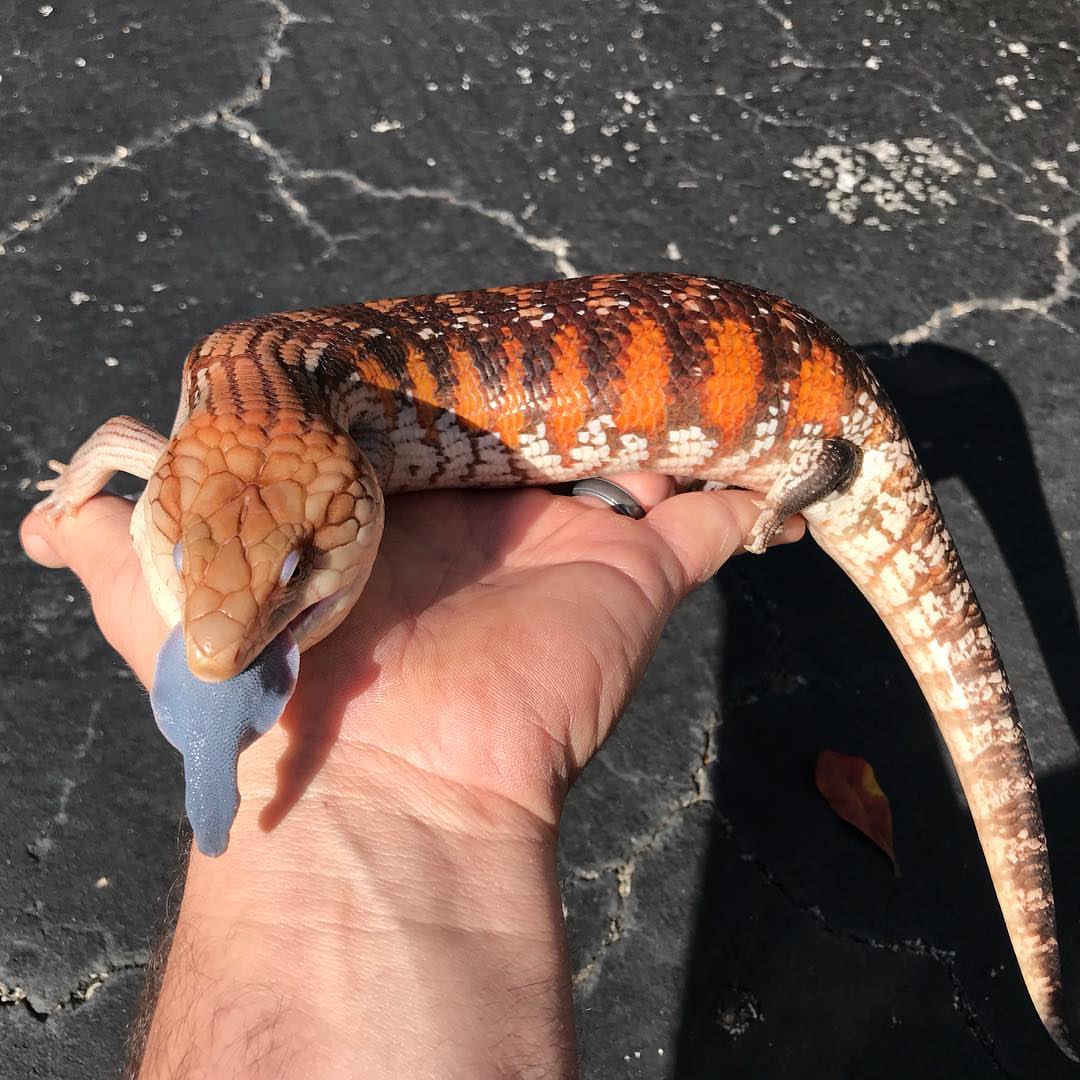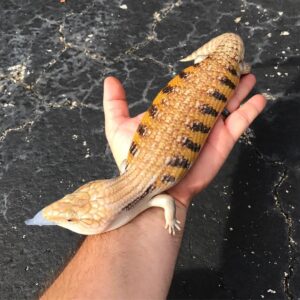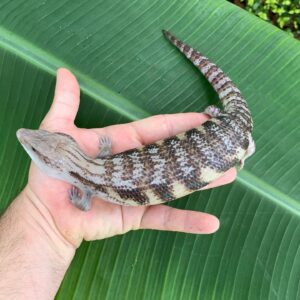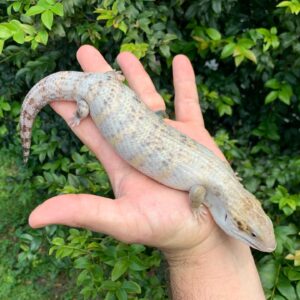Drako
$600.00
Sex: Male
Age: 6 Months
Specie: Northern Blue Tongue Skink
Preferred Diet: Green Beans, Collard Greens, Dandelion Greens, Mustard Greens.
Description
Life history cycle
Female blue-tongues give birth three to five months after mating, between December and April. The Eastern Blue-tongue usually gives birth between December and January. The Eastern Blue-tongue is able to breed every year if it has sufficient food but other species of blue-tongue may often skip a year.
The embryos develop in the female’s oviduct with the help of a placenta, which is as well-developed as that of many mammals. At birth, the young eat the placental membranes, and within a few days shed their skin for the first time. The young are ready to look after themselves straight after birth, and disperse within a few days.
Of all the blue-tongues, the Eastern Blue-tongue has the largest litters and the smallest young; up to 19 (but usually about 10) young are born, each measuring 130-140 mm in total length and weighing 10-20 g.
Eastern Blue-tongues probably become adults at about three years of age when they have a total length of about 400 mm. Blue-tongues are long-lived. Several captive animals have lived for 20 years, and they may live much longer.

Habitat
Blue-tongues usually live in open country with lots of ground cover such as tussocky grasses or leaf litter. They shelter at night among leaf litter or under large objects on the ground such as rocks and logs. Early in the morning blue-tongues emerge to bask in sunny areas before foraging for food during the warmer parts of the day. Like all lizards, blue-tongues do not produce their own body heat, and rely on the warmth of their surroundings to raise their body temperature. Blue-tongues maintain a body temperature of about 30°C – 35°C when active. During cold weather they remain inactive, buried deep in their shelter sites, but on sunny days they may emerge to bask.







Reviews
There are no reviews yet.